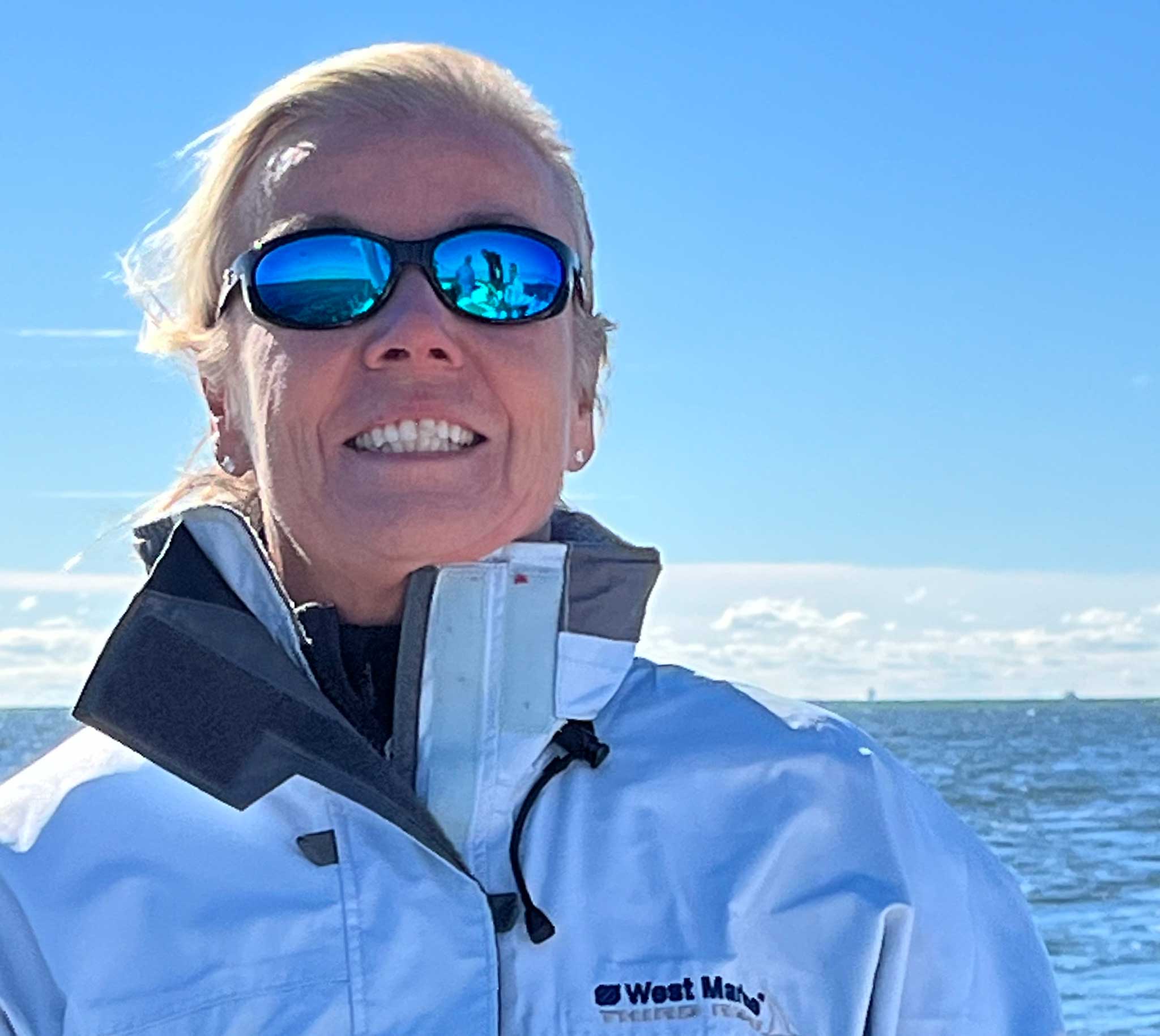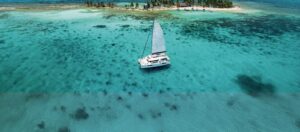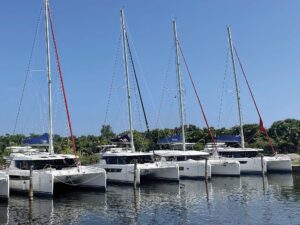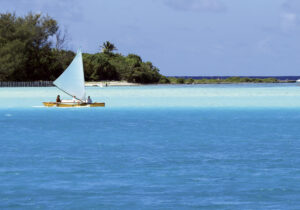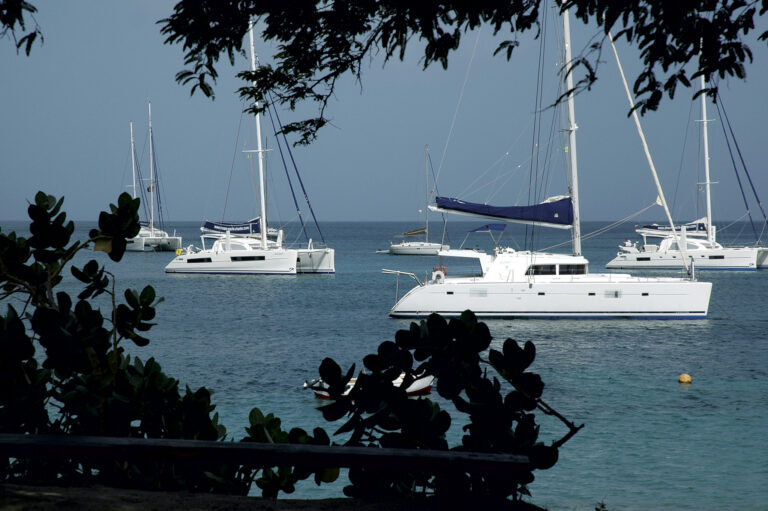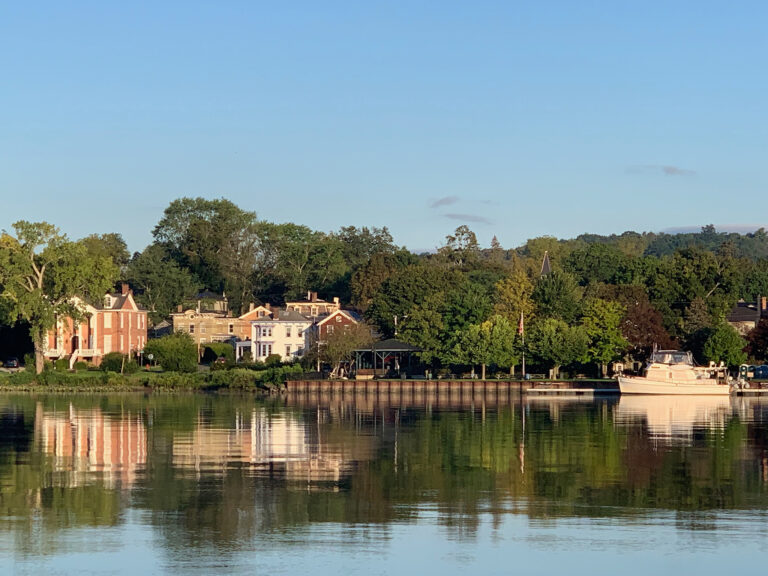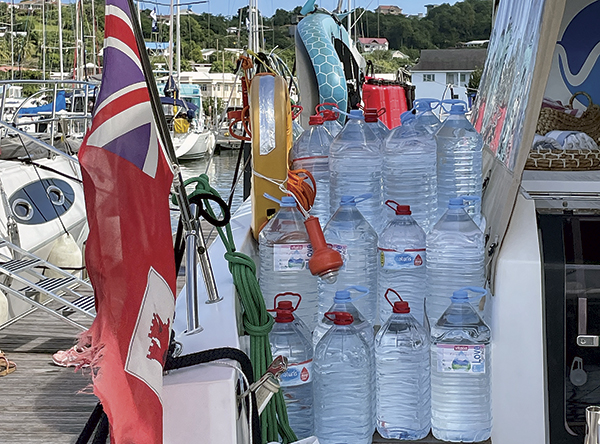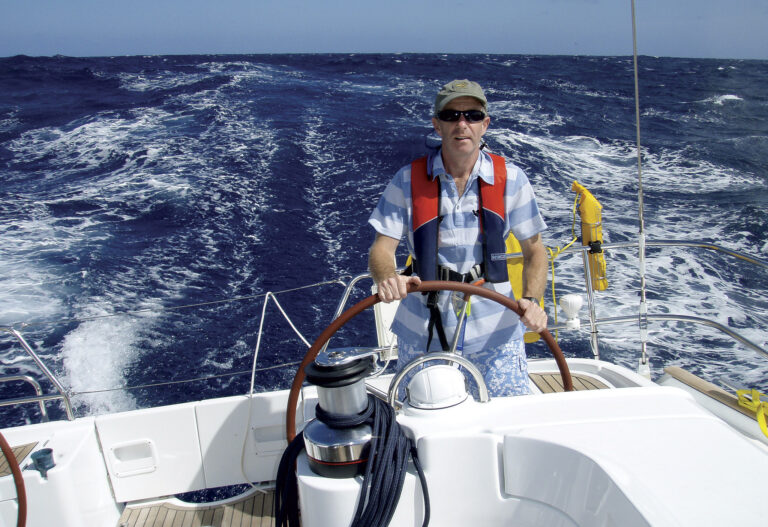
In the wake of the pandemic, many sailors are seeking adventure and grabbing onto a vision of their best lives. For some, that may mean sailing across the Atlantic with the ARC (Atlantic Rally for Cruisers) while for others, it could be a yacht charter in the Caribbean.
The latter was the case with some old sailing friends of mine, Kevin and Cathy Sebrowski, who had chartered a Lagoon 50 from TMM with a group of friends and reached out to me with questions.
As engineers and educators, they approached the charter like they were planning a mission to Mars, and it reminded me of my first trip to the BVI. Back then, our group practiced man overboard maneuvers and pored over paper charts. The current group took it up a notch with Zoom calls, Excel spreadsheets, and a PowerPoint presentation that was so thoroughly researched, it kept me in awe for an hour. These guys were the antithesis of charterers who book a flight, show up on the dock with buckets of duty-free booze, point the bow in an approximate direction and hope for the best. This group wasn’t messing around.
“What do you expect from a bunch of engineers?” asked Kevin.
Like many charterers, the group measured the distances (which in the BVI are short) and then packed the days with activities, somewhat taking into account island time and the effects of rum punch on group motivation. Tony, their captain, created the presentation to start but then asked each couple to research an island, which is a smart way to get people involved and excited. In the end, they had nine people aboard; that’s a lot of cats to herd, so it’s best that the cats have bought into a shared vision.
“The most useful aspect to us in the planning was knowing what each island had to offer,” said Cathy. “In the preliminary planning, people announced their must-do items. Those interested in diving were able to secure dive boat pickups at pre-planned stops and times, so we didn’t waste precious vacation time.”
A solid itinerary served them well. “Even when hiccups occurred, we knew where we’d be heading and were able to stay the course,” Cathy said. They had some technical issues with the boat, and knowing where they’d be each day allowed the charter base to find them and fix the problem. They also used the mooring reservation system app they had downloaded in advance, and when they found a squatter on their pre-paid ball, they resolved the issue with the help of the harbor master, so they had a secure place to stay for the night.
What would they have done differently? A little boat etiquette discussion may have helped.
“We should have talked about the use of water/showering, picking up after oneself, storing materials in your cabin rather than on the navigation table or seats, and using a towel to sit on once coming aboard after a swim.”
It’s true that issues such as where to go snorkeling initially seem bigger than conserving water or keeping a clean boat, but in the end, you’re camping with people in close quarters for a week, so no detail is too small.
What was the best part? “When you travel with great friends, those connections and shared good times are surely the best part of the trip,” Cathy and Kevin said. “However, the Baths, lobster on Anegada, the Bitter End Yacht Club, Conch Island, and anchoring in a quiet harbor were all highlights.”
You don’t have to learn PowerPoint or Excel to prepare for a charter vacation, and you don’t need to approach it like you’re going to space. But to protect your investment, you should do some planning around the specific cruising grounds, things to see and do, provisioning, and an approximate itinerary. As in the rest of life, communication and expectation management are key on vacation, so a Zoom call or two won’t go amiss.
January/February 2023

